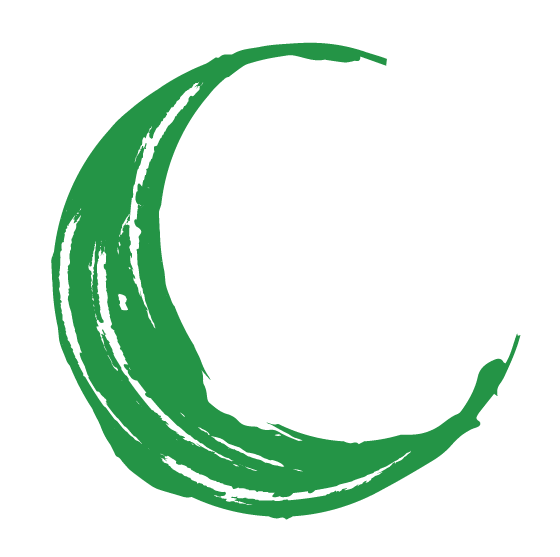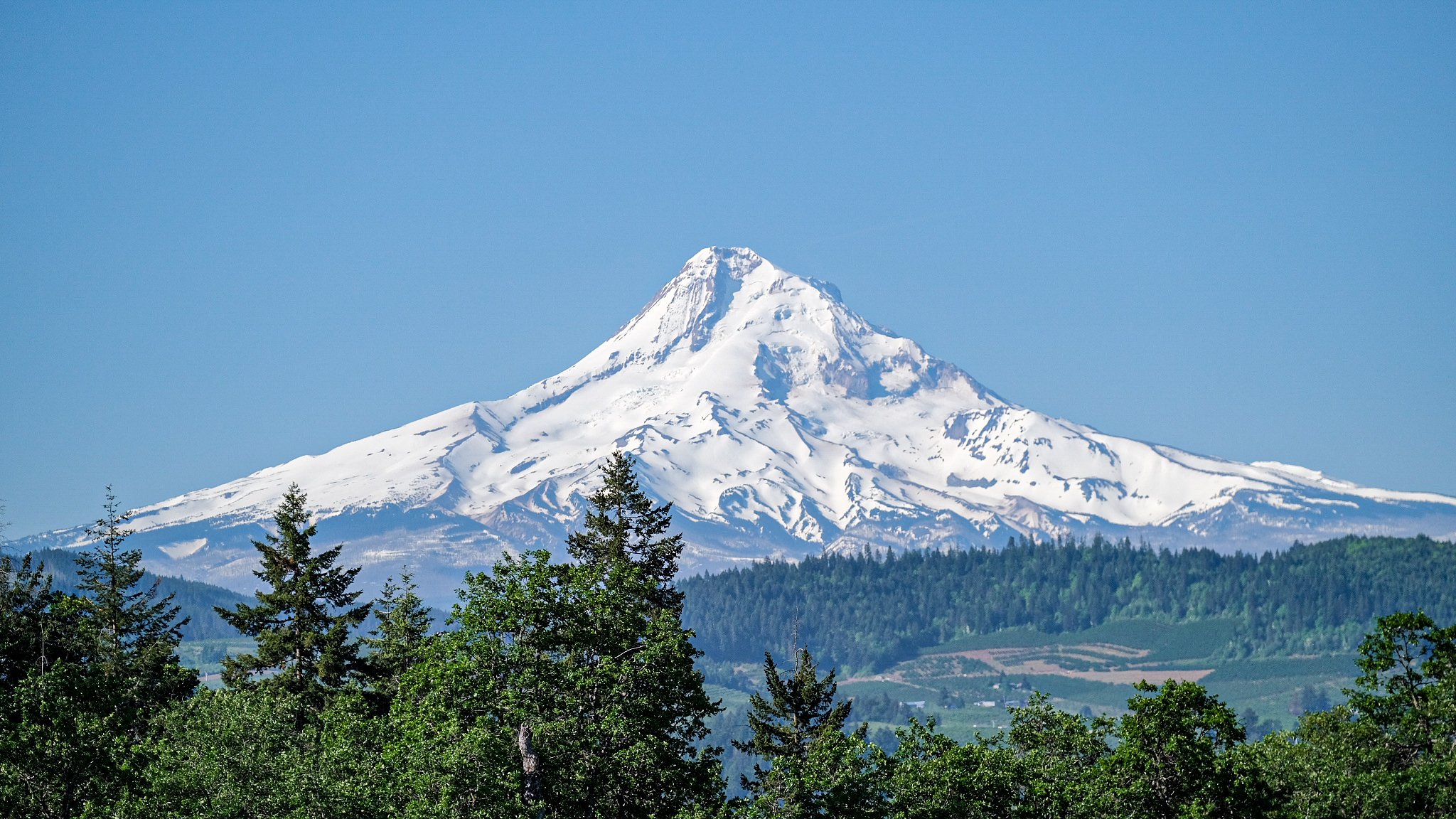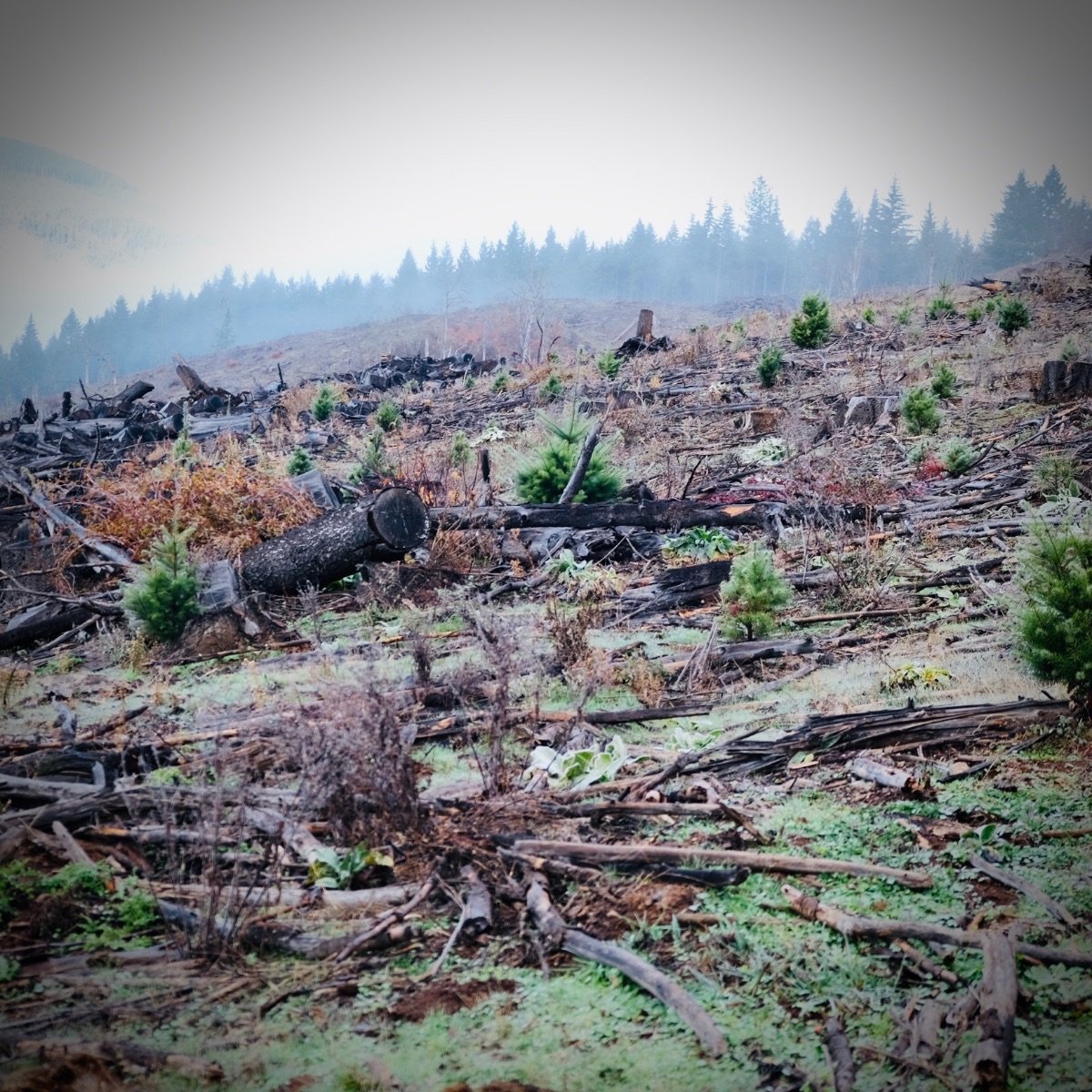the forest through the trees
So if you find yourself in wine circles long enough, you’ll undoubtedly come face to face with a concept the French call ‘terroir’. The industry is infatuated with terroir. The idea being that a wine should exude a sense of place, specifically, an innate expression that radiates where it came from. For the better part of 15 years, I’ve watched my friends and colleagues ogle over the concept, but try as I may to let herd mentality wash over my person, apparently the college whiskey drinker in me just can’t get there.
To be clear, I really don’t have a problem getting to know a place through smell and taste. I can get behind that. It just all feels a little Best In Show to make it an idol of worship. I mean I could just as easily take in New Orleans by putting some used Mardi Gras beads to my nose, but might there be a more exciting way? Not that Rick Steves or a Greyhound bus tour are the preferred lighthouse, but I’d lay good money that a bottle of fermented grape juice has less to say about the local color of a region then going there or even reading about it.
Terroir is so precious to the industry that the majority of French bottles don’t even put the grape on the label. Instead a town of inception will be plastered in bold script, like Chablis or Meursault. It’s anybody’s guess that both of these villages typically produce Chardonnay, as grape is merely the conduit to communicating a place in vinous form, and therefore, too irrelevant for titled credit. Sommeliers, in turn, eat this up like catnip. Partly because blind tasting is their Friday night lights. They are handed a glass of wine that could be virtually anything from anywhere and are asked to pin down a wine’s origins using no other data than what their senses and taste memory can conjure. The success of said endeavor hinges on the idea that wines from Napa or the Northern Rhone Valley or Topeka, KS should possess a specific stamp, a common thread of a given locale, based on the inexhaustible amalgamation of weather, soil, topography, and whatever was left behind in a vineyard—rabbit pellets, a decomposing Gucci scarf… You get the drill.
Inevitably, when a sommelier fails to identify a wine blind, they tend to blame it on the wine’s lack of ability to convey terroir. They’ll bemoan its innocuity and anthropomorphize a glass of Sangiovese, exclaiming “It’s not speaking to me”, as if it were their defiant sibling. I’ve been that guy. And despite wandering ALL the way down the rabbit hole, I concede that there’s only so much the scent of tar and roses can teach me about Northwest Italy. I won’t go so far as to dissuade anyone from playing the game. But I will say popping a cork, while certainly the best part of the job, is the furthest step in a wine’s life from whence it came. And our brand of entertainment, masquerading as cultural enlightenment, does little to reveal how land is bent, broken and healed.
GORGE TERROIR
If you’re new to the concept of terroir, you understand more than you think. Not the least of which, that terroir is fluid. Ask any old-timer about their hometown, and they’ll extol the virtues of how the neighborhood used to beat and pulse. Maybe a high rise used to be a single-level flower shop owned by Roberta and Mabel. Maybe a bustling section of town with a vinyl shop and self-important hipster coffee used to be a dairy farm. The Columbia Gorge is no exception, and if you ask an inhabitant what makes this place tick, they might say “look around you.” It’s hard to deny the beauty of a truly staggering river valley with snow-capped volcanoes and endless waterfalls. Every head swivel is a veritable postcard. But a member of the Klickitat Nation would likely tell you a different story. A story of paradise lost. What this place used to be before their people were driven from it.
If the fate of Native Americans sounds a bit off topic, consider this. The same mindset that subjugates people, subjugates all manner of life. Settlers of old, like modern-day dictators, draw from the same well, an inherent conviction that nature is a possession. Meanwhile indigenous peoples hold a worldview that nature is a provision, and therefore, their relation to land is very different.
Much of the Pacific Northwest is defined by logging, and the ultimate global commodity—the brass ring of wood-fashioned imaginings—is Douglas Fir. You can’t go anywhere in the Gorge without one hitting you in the face. Their A-framed silhouettes are ubiquitous, lining mountainsides, trails and byways. And while logging is nothing new, what the engine of commerce has added to their sizzle reel over the last 150 years includes a depletion of ancient forest stands that were once a renewable resource to native peoples for millennia.
When the Yakama Nation logged a forest, they wouldn’t take more than 30% of it, and the canopy of shade presiding over a forest’s understory of ferns and fungi would never be broken. They would fell a tree in one place, and the next from somewhere else. There would be no need to replant seedlings because the surrounding sentinel trees would do their bidding for them. Over time the forest would repopulate itself and the cycle of renewal would continue.
Modern logging looks a little different. Instead of taking a staggered portion of the forest, the majority of logging companies clear-cut giant parcels like a pair of electric clippers buzzing through a thick head of hair. Within that parcel, 100% of trees are often cut down. Some are milled locally but the majority are shipped off to Japan or Australia or wherever good wood is en vogue. With huge patches of ground now suddenly exposed, there are no surrounding trees to repopulate the forest. Stressed out soil that was never meant to see the light of day meets responder plants that spring up to heal and regenerate the bare earth. We call these medicinal plants ‘weeds.’ And naturally, since logging companies have to replant seedlings, they’re known to give their prized young evergreens a competitive advantage by helicoptering weedkiller like a G.I. defoliating the bush. If that analogy feels a bit strong, it may help to realize that herbicides like glyphosate were descended from Agent Orange.
Glyphosate, known by its brand name Round Up, is water soluble, finding its way into our streams and drinking water. You may have perused the numerous cancer lawsuits Bayer inherited after absorbing Round Up’s petrochemical progenitor, Monsanto. As to the forests, they are not replanted as they were found, with a diverse stand of trees (oaks, maples, pines, firs, etc). Instead they are manufactured into a rank and file Christmas tree lot of the golden child: Douglas fir, sprinkled with the occasional Ponderosa pine. You cut down enough old growth trees throughout the United States, as the forestry service did for decades, and you’re left with less than 1% virgin forest. The irony is that we look at 100 or 200 year old Douglas Fir trees as this spectacle of ‘old growth,’ when their life cycle can exceed 1,000 years. At best, these days, we perpetuate adolescence. The forests we know are not really forests at all. They’re crops. And thus, they don’t have the resilience through natural selection to reach maturity (even if we decided not to harvest them every 40 years).
FOREST THROUGH THE TREES
If our forestry management practices sound like hearsay for a wine article, what if I told you we do the same thing with vineyards? We clear-cut trees and commandeer entire swaths of land, blasting chemicals left and right to keep this artificial system of one species on life support. A system of planned obsolescence requires vines to be updated every 50 or so years because there’s no symbiotic resilience from companion life, and because we chose what we wanted to plant, not based on consultation of nature, but rather our cultural attachments and capital interest. To maximize yields, we plow the soil, oxidizing it and releasing tons of carbon into the atmosphere, so as to remove all would-be threats of ‘other’ plant life to the cash crop (a crop that consists of maybe one or a few varieties of grapevines from Europe that likely have no earthly business being where they are). And why? Because wine from these grapes tastes really good.
And if they taste good enough, acre upon monocropped acre accrues in value as wealthy collectors drive market demand for bottles of wine that are worth $500, $1,000, $5,000 and more. As demand grows, investors of wineries will stop at nothing to protect that investment with mounting pressure to not only yield a crop by whatever means necessary, but also to deliver a consistent product through manipulation in the cellar. Yes, even your $5,000 bottle of wine is homogenized. Especially because it’s $5,000. But fuck it. It’s a once-in-a-lifetime tasting experience. And it’s a homerun with seared duck. And oh my god, it screams terroir…
Yes, thanks to monoculture and the market’s demand for single grape wine, somms are lionized for nailing a wine blind and privileged patrons get to lick their lips and play a little game called Chardonnay from Chablis tastes different than Chardonnay from Meursault, all around a glorious table, undoubtedly wrought from Douglas Fir. Meanwhile, many of those same people wax lyrical about the climate crisis. And the truth of the matter is that Viticole, and every other branch of the wine industry from farm to table, is complicit in penning this folly. Unless of course we shed some of our skin…
DANCING ON THE STARS
So what if we shelved our insidious little science experiment? This Frankenstein game of disfiguring land and somehow calling it a snapshot of a place. We have enough lawns and putting greens, don’t we? As mentioned in previous articles, the relics of truth remain in famous vineyards, named after flora and fauna that have been eradicated from the ecosystem: Poissenots (land of fish), Genevrières (juniper trees), Griottes-Chambertin (sour cherries in Bertin’s field), Chatenières (chestnut trees), Clos des Chênes (enclosure of oaks), Cheverny (hemp fields), Les Forêts (the forest). What truth has been replaced by resembles plastic surgery gone too far. And us, nipping and tucking with a potent dysmorphia that says perfectly trimmed hedges are beautiful, satiating the inner hospital corners of our psyche.
Are we still in love with terroir? Cool. Might we consider taking one small step toward encouraging the sense of place that rightfully belongs to it? It’s hard to imagine what that might look like in terms of cultivation. Wineries try to paint a picture of being in collaboration with nature. Nature as their dance partner. But if their practices in the field were converted to a dance floor, it would be like a novice walking up to the greatest ballroom dancer of all time, and with no desire to profit from their expertise, declaring, “We’re dancing the Foxtrot. Let’s go.” Meanwhile the professional pleads with the amateur, “You can’t dance the Foxtrot to Salsa music.” To which the novice replies “We’re dancing the Foxtrot and I’m leading.”
This is how we farm. This is how we colonize. We ignore the music.
SITTING ON A RAINBOW
For the Columbia Gorge’s part, Jure Poberaj (Poberaj Wines) and James Mantone (Syncline Winery) are among those who have decided to start listening. Now I can’t speak on behalf of Mr. Mantone’s Salsa moves, but he started the dialogue by asking the question ‘What does Gorge terroir really look like?’ It’s a simple question that can span 100 lifetimes of exploration without licking fir bark or chewing on a logger’s flannel. It’s a question that lives above and beyond the organic plus vineyard he farms, perched over Lyle, WA. And it flies decidedly in the face of the notion that one grape should be the lone spokesman for a vast ecosystem.
Syncline was inspired to forage for a delicious cider last year from wild trees in and around the area. And because other flora have been allowed to participate in fermentation, perhaps we can view them as a recurring role, instead of the random dude in Star Trek who always gets whacked the moment they land on the alien planet. Behold, a nature-led activity that sets us to the music. Finding the Salsa means walking up to raw land and saying “What is this place providing that’s already happy here and in abundance?” And if the answer is used Mardi Gras beads, I’m sorry.
In this year’s collaboration, we scouted out several roadside outposts of feral fruit and landed on a cider-grape blend, part foraged and part cultivated, from a friend’s homestead just up the road. The result inches James one step closer to the remembrance that we are completely dependent on the wilderness. It recements that sensitivity in lieu of the agents of human refinement that numb us—the sprays, the trellis wire, the single crop rows, the irrigation lines. They fool us into thinking we are the marionette. That we have the world on a string, sitting on a rainbow and all that. In the absence of such extractive practices, we stop trying to tame the untamable, and nature’s will is allowed free reign. Not to mention ‘weeds’, now welcome in the system, are seen for what they actually are: medicine. Or if you prefer, terroir.
THE SALSA
It is not uncommon to find James at White Salmon Baking Co, a community coffee shop that Jure and his partner Nina Jimenez launched several years ago. And while Syncline’s first vintage was well over 20 years ago, Jure finds himself on a similar trek in harvest 1. A trek that saw a westward migration long ago from Slovenia, eventually landing him in a place where any Olympic kayaker would want to settle down. While Jure and Nina's polycultural farm of grapevines and orchard trees take root, our Poberaj bottling adds an infusion of foraged local herbs to a 2020 Nebbiolo. A juncture we arrived at via a different question.
When I tasted Jure’s astounding Nebbiolo in barrel, I asked him “If you could change one thing about this wine, what would it be?” He thought for a second and stated, “I wish it had more of the earthy, tobacco notes that I get with Barolo.” And so I asked him if he thought we could retain some of those accents through an herbal infusion. There was only one way to find out. Cue dance shoes.
And so for those who come to wine strictly for sensory experience, the question becomes, if we use barrels to impart flavor and texture to a wine (an infusion in and of itself), is then an infusion of herbs from the area really so scary? Furthermore, can they actually make wine better? The beauty of this possibility leads to an idea that wine must mimic in the bottle what we want it to look like on land. If we bring one grape to bottle, then market demand will incentivize one grape on land. If wine becomes more than grape, mixed fruit bottlings, herbal-grape infusions then we incentivize biodiversity and polyculture in a rural space. The hero worship of wine as a single grape model must go.
“But I LOOOOVE Syrah” you say. Yeah. So do I. Tough shit. Gargle with olives and black pepper twice a day. You’ll be fine. In the meantime, it makes sense that local herbs would add earthiness and rusticity to a wine and have as much right to be there (even more right) than a barrel from a French forest. After all, wine producers utilize grape stems in fermentation for the same desired effect. Should they want to lower alcohol and add freshness to a barrel, perhaps instead of employing industrial tartaric acid or whatever mechanical wonder facilitates dealcoholization, they can simply blend in a local tart berry. The permutations of new and captivating sensory potential are limitless. And it’s not even new. It’s where wine began when it was a pharmacological remedy.
Herein lies the Salsa.
FINAL THOUGHTS
In my short time living here in the Gorge, it has been a pleasure to get to know James and Jure. Their sense of community enriches this place and lends credence to a theory that the vibrancy of life, the strength of a place’s signal, cannot be fostered in isolation. And when they are not busy communing, they are assuredly spending their stolen moments reflecting and asking questions. I am constantly energized by curious people. It’s a rare trait in an industry that loves to have all the answers.












